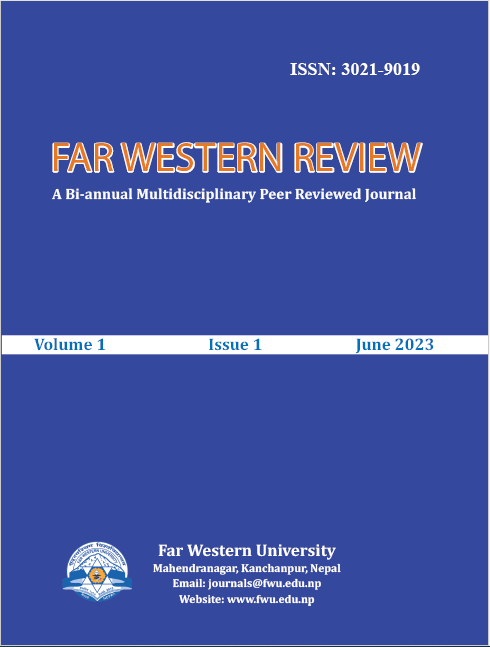Transformation of Built Environment in Karnali and Far Western Himalayan Region of Nepal: A Case Study of Settlements of Chandannath and Martadi
DOI:
https://doi.org/10.3126/fwr.v1i1.58329Keywords:
Built environment, transformation, Himalayan settlements, Karnali and Far Western Himalayan region, NepalAbstract
The built environment in Nepal has undergone significant changes due to the construction of transport infrastructures, particularly roads, and the establishment of local governments in 2015. The Karnali and Far Western Himalayan Region (KAFHR) in Nepal have unique traditional rural settlements characterized by distinctive settlement patterns, house forms, roof structures, building materials, and spaces. In the upper Karnali region, buildings have flat mud roofs called ‘Thada’ and are interconnected at the roof level known as ‘Bada,’ which serves as a public gathering place. In the Far Western region, buildings have sloped roofs covered with slates and are connected through courtyards, narrow passages, and public spaces. The development of road access and the influx of population have transformed these settlements, not only as market centers but also in terms of their patterns and features. The new political and administrative power of municipalities has influenced the self-governance of these settlements. However, they still face significant risks from disasters such as landslides and earthquakes. This paper focuses on analyzing the transformations in two settlements, Chandannath-Jumla and Martadi-Bajura, using a mixed-method approach. The study utilizes secondary data from literature reviews, spatial analysis, and open street maps through a QGIS-based application. Additionally, the knowledge of local citizens is incorporated through key informant interviews, enabling the development of a trajectory of settlement transformation from 2000 to 2020. The analysis identifies various drivers of transformation in socio-cultural, ecological-environmental, economic, and political domains, along with their dynamics. By filling the knowledge gap regarding the transformation process in the KAFHR, this research contributes to understanding process of shaping settlement patterns, forms, features, inclusivity, and sustainability in these regions.
Downloads
Downloads
Published
How to Cite
Issue
Section
License
Copyright (c) 2023 Madhab Raj Neupane, Kishan Datta Bhatta

This work is licensed under a Creative Commons Attribution-NonCommercial 4.0 International License.
CC BY-NC: This license allows reusers to distribute, remix, adapt, and build upon the material in any medium or format for noncommercial purposes only, and only so long as attribution is given to the creator.




